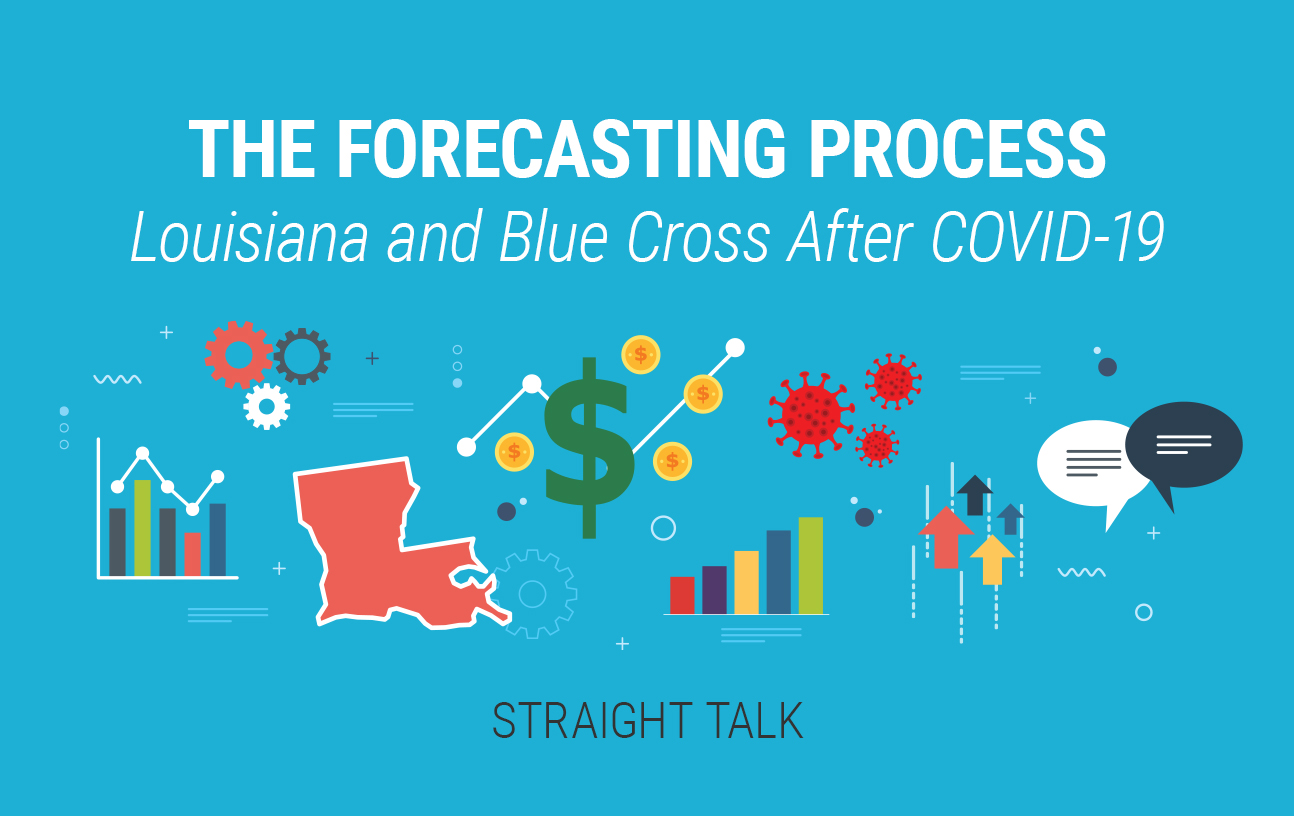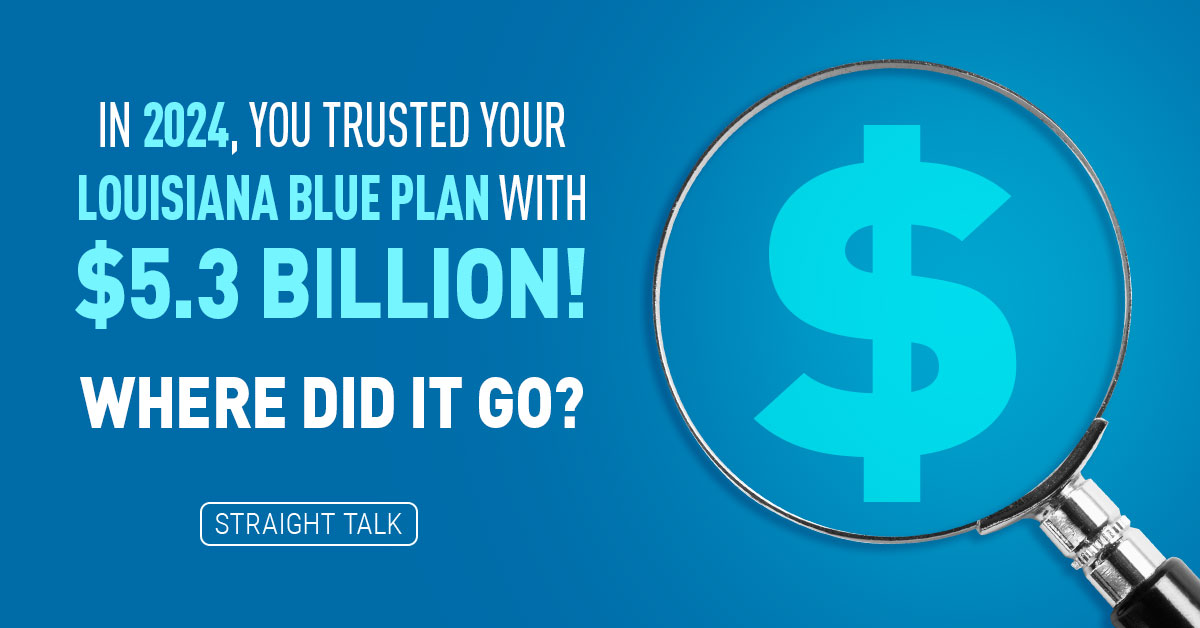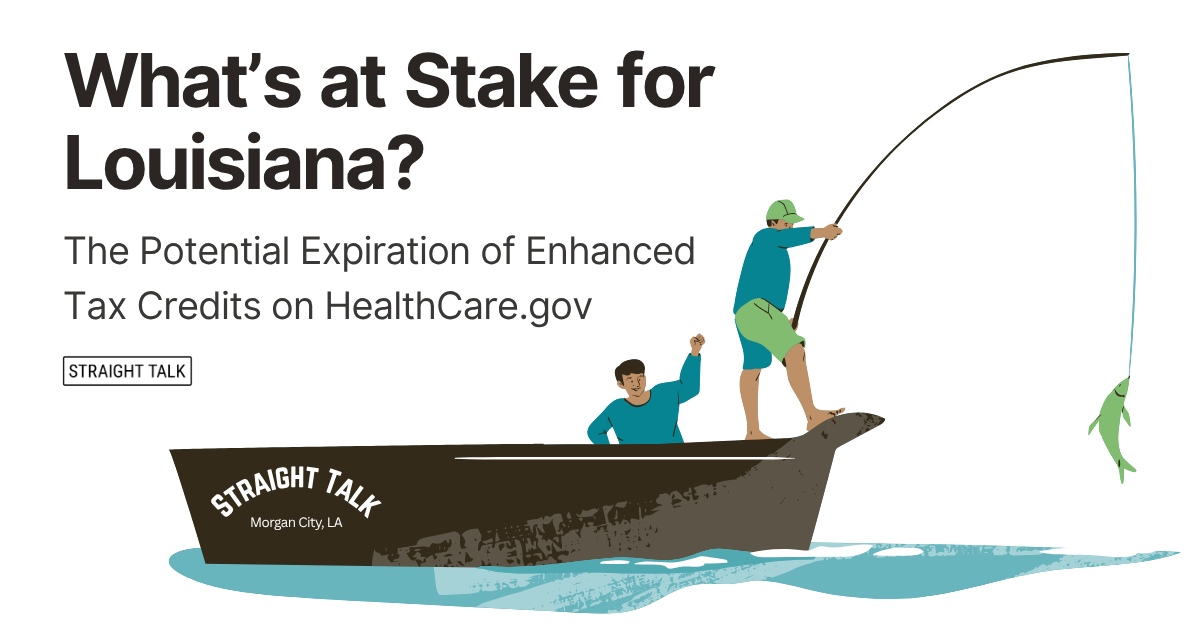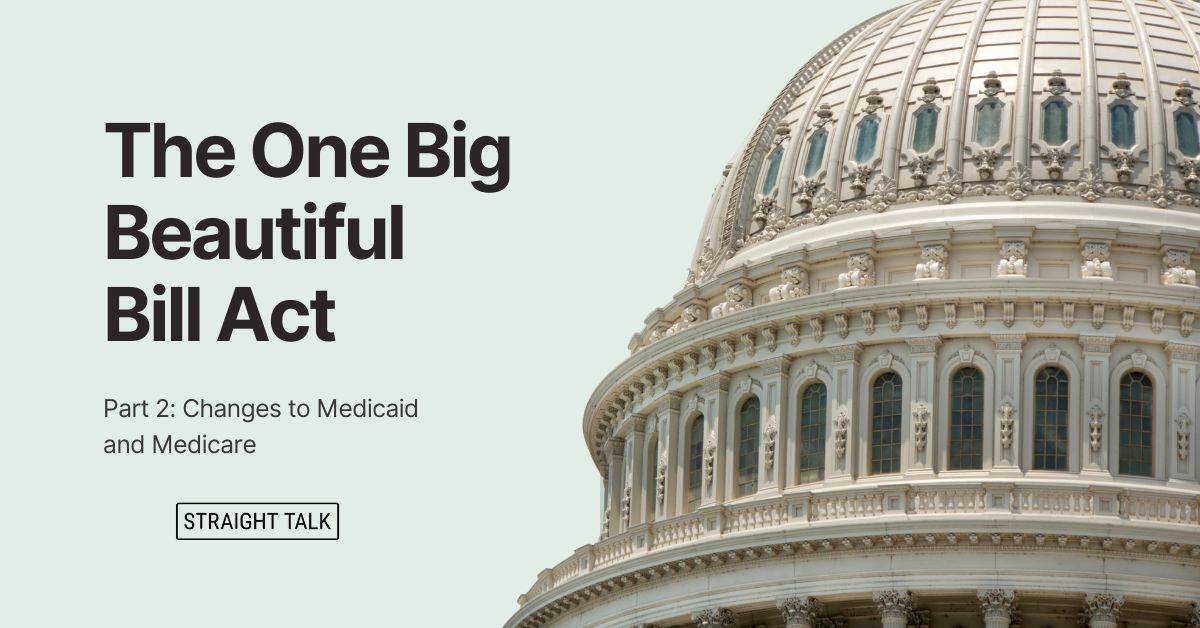As healthcare economist for Blue Cross and Blue Shield of Louisiana, I figure my job looks pretty mundane to most people. Above all things, my job is studying, understanding, reporting and predicting, in that order.
I spend the vast majority of my time reading. Over the past 15 years, I’ve cultivated sources via journals, email blasts, Twitter, LinkedIn and blogs that help me keep track of trends in healthcare and our economy, both here in Louisiana and nationally, if I think it has ramifications for our state.
The real key to my process is to quickly identify things that could affect all of us, and our healthcare in Louisiana. As I find those important trends, I tag them and look for more data on them to add to my daily stream. Likewise, as the probability of some things happening phases out, I delete them or make them less important in my daily stream.
As I’m absorbing all this new, sometimes complex data, I’m constantly trying to figure out how to explain it to someone who DOESN’T read this stuff every single day like I do. The secret sauce of the Straight Talk blog, if it has one, is my ability to convert the complex into the clear without losing the data. Fortunately for me, I come from a long line of teachers and storytellers. But that’s for another article.
Slices, Dices and So Much More
Besides developing the content for Straight Talk, my real job at Blue Cross is to forecast and report on our membership. I study it, slice it, dice it and analyze it about 11 different ways. I have history on our membership performance that goes back as far as 2004, including what happened during hurricanes Katrina and Rita back in 2005 through 2006. So, when COVID-19 hit, an event of unimaginable disruption, it falls to me to break out the crystal ball and talk about what I think is going to happen with our membership next.
Spoiler Alert: I’m NOT going to tell you what I think is going to happen next.
What I will do is describe for you some of the variables I’m watching very carefully, and why. When I say the word “variable,” all I’m really talking about is a data point, or trend, that I think will change during this disruption and have bearing on what our economic and healthcare lives will look like going forward. The things I care about, I believe, we will all care about eventually.
Variable One: Oil
This being Louisiana, of course I’m interested in the price of oil.
Now, simply put, a good chunk of Louisiana’s economy is tied up in drilling, producing, refining and shipping various petroleum products. And that all starts with getting the oil out of the ground. There is always risk and always a cost associated with getting that oil out of the ground, and different methods always have different costs.
If you drill a well on dry land and find good, quality oil not too deep and under enough pressure to flow out by itself, that’s the cheapest oil to get out of the ground. If you have to go hundreds of miles offshore, use extraordinary technology and drill very deep, it costs more. So, the key to keeping our petroleum-based investment in Louisiana flowing is this question: “Can we make money pumping oil out of the ground?” As the price goes down, some methods become absolutely unaffordable.
By my estimate, around 15% of the state’s economy goes up or down based on the price of a barrel of oil. I’ve got some data that shows at what oil prices companies start shedding employees, and how many of them lose their health insurance in the process. In general, to keep things running smoothly, we’d like to see oil prices around the $50/barrel range.
Right now, two things are depressing the price of oil: People aren’t using as much because travel has been reduced so much, and a few other countries that have lots of oil are trying to out-produce each other, so there’s so much oil floating around, they are running out of places to store it. The oil price actually dipped below $20/barrel a few weeks ago. You’ll see that next time you buy a tank of gas (which we are doing much less frequently nowadays). Where that oil price is by June will drive (no pun intended) a lot of my forecasting after that. A lot.
Variable Two: Cost of Treating COVID-19 Patients
Another thing I’m very interested in is how much money from state coffers and private insurance companies is being spent treating COVID-19 patients, and how much we are NOT spending on healthcare because all non-critical healthcare is basically not happening right now. In March, the Louisiana Department of Health issued an order that “all medical and surgical procedures that… can be safely postponed… SHALL be postponed.” That order currently goes through April 30.
Clearly, we have lots of friends and neighbors in the hospital right now because of COVID-19. Around 20% of them are in intensive care units trying to beat this nasty virus. Also, we have lots of friends and neighbors who are in no hurry at all to get elective or non-emergency surgeries like knee replacements. At the end of the day, how will these things compare to each other?
Variable Three: The Human Element
And some of the other things I’m thinking about are not so easy to measure, but are more “feelings” I have, based on my experience with other disruptive events.
In the months after Hurricane Katrina, LOTS more people bought individual health insurance policies than had ever bought them before. Some of these policyholders got extra federal money to do so, but many I talked to said Katrina forced them to come to grips with their own mortality, to realize that they really weren’t as indestructible as they thought, and that made them seek financial protection for their health needs. The tragedy really brought home that something bad COULD happen to them. Will COVID-19 drive a similar reaction in folks?
And the final unknown I’m studying right now involves our attitudes about the future. What is “returning to normal” going to look like? Clearly, we can’t all just start gathering like we did before while COVID-19 is still out there, or we’ll just start up another epidemic, won’t we? And never in the history of the United States has the federal government — without even blinking — distributed aid in the volumes it is distributing it today. The total Katrina/Rita federal response, which included rebuilding New Orleans, was around $150 billion. The federal government has already committed $3 TRILLION to the COVID-19 response, with no end in sight. Can the application of enough money, supplies and focus on things like vaccines and medicines put an end to COVID-19?
I think about these things a lot, trying to visualize timelines and responses. And always, in the back of my mind, remembering I was born and raised and have lived my entire life in Louisiana, a state that is just a little different from everywhere else. Louisianians always surprise me, no matter how smart or plugged-in I think I am.
You all manage to keep surprising me. Don’t ever stop. And I’ll keep reading and studying and separating the sheep from the goats data-wise, and I’ll make sure I keep sending up my thoughts and analysis about what comes next.
Straight Talk is, that’s what they pay me for. And I can be painfully honest. And “I don’t know” really means “I don’t know” when I say it. You can count on that.
Stay safe my friends.





Your crystal ball has clouded up!! HURUMPH!!!
You never know……who ever predicted the price of a barrel of oil just 60 days into the future would close at $0.05? Strange times.